Latest posts by (see all)
- The Best Things to Do in Tulsa - June 26, 2020
- The Most Interesting Things to Do in Springfield Mo - June 15, 2020
- Best Things to Do in Salt Lake City - May 26, 2020
- 10 Best Websites for Playing Online Games - May 22, 2020
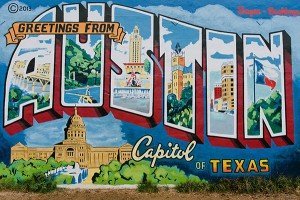 Austin is the main city of Texas with a population of one million people and the second largest state capital in the country. It houses the state’s main university, the political, technological and musical heart of the state. Here they like to call the city “the world capital of live music”. There are so many high-tech companies working here that the city is sometimes called “Silicon Hills”.
Austin is the main city of Texas with a population of one million people and the second largest state capital in the country. It houses the state’s main university, the political, technological and musical heart of the state. Here they like to call the city “the world capital of live music”. There are so many high-tech companies working here that the city is sometimes called “Silicon Hills”.
In order to somehow navigate in interesting places of the city, it is absolutely necessary to understand in advance which area to go to. First you can start from the university part of the city, where tourists will have enough entertainment for the whole day.
3 things to do in Austin:
- Go up to the observation platform of the University Tower, and then go to the cafe “Cactus” on campus. The cafe is famous for live music, and in general is very famous.
- To see the “Garbage Collection” in Austin-South, an art installation in the backyard of a Vince Hannemann, which was created for more than 20 years from scrap metal and other junk. Today the cathedral has grown to 3 floors.
- Observe the world’s largest urban colony of bats. More than 1.5 million mice live under the bridge of Ann Richards (Congress Avenue), but they can only be seen in the summer: in winter they migrate to Mexico.
Now let’s start our virtual journey to the most interesting places in Austin:
Contents
- Place to visit number 1: Baltimore
- Place to visit number 2: Sculpture “Awakening”
- Place to visit number 3: The Baltimore-Washington International Airport
- Place to visit number 4: The M & T Bank Stadium
- Place to visit number 5: 1st Mariner Arena
- Place to visit number 6: The Dutch Island
- Place to visit number 7: Fort Carroll
- Video
Place to visit number one: Governor’s Mansion
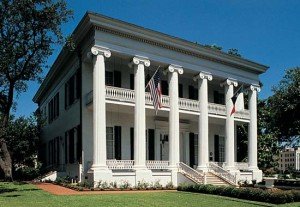 The official residence of the governor of Texas in Austin or simply Governor’s Mansion was built in 1854. The author of the project is the well-known self-taught architect Avenir Hugh Cook, who built many historic buildings in Austin. Currently, Governor’s Mansion is a national historic monument of the United States.
The official residence of the governor of Texas in Austin or simply Governor’s Mansion was built in 1854. The author of the project is the well-known self-taught architect Avenir Hugh Cook, who built many historic buildings in Austin. Currently, Governor’s Mansion is a national historic monument of the United States.
This two-storey building, built in the style of the Greek Renaissance, is surrounded by a beautiful garden with well-kept lawns and bright flower beds. The mansion has a total area of 560 square meters, it is painted white and its facade is decorated with several tall columns.
Some facts about the Governor’s Mansion:
- It is known that for the construction of the Government of Texas was allocated 17,500 dollars, 2,500 of which were spent on purchasing the necessary furniture.
- In 1914 the restoration of the Governor’s Mansion was held.
- The building was enlarged in size to 829 square meters.
- Until now, Governor’s Mansion had as many as 11 bedrooms but there was not a single bathroom. Thanks to the reconstruction, 7 baths appeared in the mansion, and the number of living rooms was increased to 25.
- In 1931, on the advice of the first lady of the state, Mildred Paxton Moody, the so-called “council of the mansion” was created, the main task of which was to control the interior and exterior of the building, as well as maintaining the entire house in perfect order.
The first head of the council was Ms Moody herself. This body was abolished in 1965. In 2008 there was a fire in the mansion, as a result of which the building was badly damaged. Fortunately, Governor Rick Perry and his wife Anita Tigpen Perry at that time were in Europe. Interestingly, shortly before this event, $ 10 million was allocated from the state budget to install a modern firefighting system in the Governor’s Mansion, which they did not have time to install.
Interesting: In 2009, the reconstruction work began, the repair of the Governor’s Mansion cost 22 million dollars. At present, the government building is carefully guarded by policemen, while access to visitors is not limited.
Back
Place to visit number 2: Deep Eddy
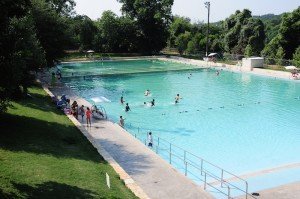 Deep Eddy is the historical pool, the oldest of all existing in Texas. The artificial pond was built during the Great Depression, it became a resort in the 20s of the last century and remains a popular vacation spot for Austin residents up to this day. Initially it was a regular pond near the Colorado River, filled with cold spring waters, but eventually it was turned into a comfortable concrete pool.
Deep Eddy is the historical pool, the oldest of all existing in Texas. The artificial pond was built during the Great Depression, it became a resort in the 20s of the last century and remains a popular vacation spot for Austin residents up to this day. Initially it was a regular pond near the Colorado River, filled with cold spring waters, but eventually it was turned into a comfortable concrete pool.
Next to Deep Eddy, camping sites have gradually grown, cabanas for changing clothes have appeared, huge umbrellas and comfortable chaise lounges have been installed. The artificial pond was divided into several sections of different depth: the shallowest was intended for small visitors, adult bathers had the opportunity to dive in the deep part of the pool.
In 1935 there was a big flood – the waters of the Colorado River came out of the shores and flooded everything around. Among other structures, the Deep Eddy basin was also affected. It was filled with dirt and debris, became unsafe and no longer corresponded to sanitary norms. It was decided to close the pool for restoration. Repair work lasted about a year, the opening of Deep Eddy took place in 1936. During this time, the artificial pond was significantly improved – a beautiful playground appeared on its western side, and the thickets nearby turned into a wonderful park. The townspeople gladly returned to the favorite place of rest.
Unfortunately, over time the pool began to deteriorate. Concrete cracked, in places the tiles fell off. Deep Eddy was again closed to visitors, this time for a very long time. Despite this, it was still considered a local landmark, information about this basin was present in all the historical directories of the city. The famous musician Jimmy Dale Gilmordaje dedicated his song to this place, which was called “Deep Eddy Blues”. But time is ruthless, and very soon the pool has come to complete desolation.
In 2002, the Austin Swimmers Association and other members of the public began raising funds for the restoration of Deep Eddy. The restoration of the reservoir began in 2005:
- the builders completely replaced the bottom of the pool,
- expanded it,
- installed a modern pump and improved this place significantly.
Currently, Deep Eddy operates all year round, only during the winter months, its work hours are somewhat limited.
Interesting: The water here is always extremely clean and cool, it is never chlorinated. In summer, pool visitors have the opportunity to watch movies on an installed large screen directly from their inflatable mattresses. There are also often sport competitions in swimming held.
Back
Place to visit number 3: Austin Zoo
 Non-profit organization and one of the few zoos that does not deal with the conservation of a population of rare species of animals. In fact, this is a shelter for many animals found in the street. The main mission of the Austin Zoo is to help, save and rehabilitate our younger brothers who are in trouble. Currently, its
Non-profit organization and one of the few zoos that does not deal with the conservation of a population of rare species of animals. In fact, this is a shelter for many animals found in the street. The main mission of the Austin Zoo is to help, save and rehabilitate our younger brothers who are in trouble. Currently, its
territory is home to about three hundred animals of more than one hundred different species. Among them there are:
- Bengal tigers,
- African lions,
- jaguars,
- pumas,
- black bears,
- lemurs,
- porcupines,
- monkeys and many other inhabitants.
The history of the zoo began in 1990, at that time he worked as a ranch on which the four-legged were given shelter in need of care. Basically, these were domestic animals, for one reason or another were on the street – goats, deer, ponies, donkeys, horses. There were several exotic animals. Gradually, their number increased, the institution expanded and in 1994 it was named Austin Zoo. Currently, it is inhabited mainly by animals that were selected by court decision from cruel owners, transferred from other menageries with poor conditions of detention, found in the street and given for treatment. All of them are gaining strength in Austin Zoo and remain here forever.
In 2009, this zoo became home to four rare black wolves that were abandoned by former masters during Hurricane Ike in 2008. In 2010, the zoo received two African lions. They were handed over by the private owner with the request to contribute to the conservation of rare animals and their breeding.
Austin Zoo is especially adored by children who like to observe the habits of cockatoo, a family of quick monkeys – perhaps, the noisiest inhabitants of the zoo. Only ungulate animals are allowed to feed here, however, all local residents are always well-fed and well-groomed. But you can take as many photographs as you want. In front of the cameras, the arrogant peacocks are especially fond of posing, proudly disbanding their luxurious tails. They wander here, like chickens through the village, shimmering with all the colors of the rainbow.
Interesting: The Austin Zoo is not the largest, but it’s very much like a cozy home farm. In the zoo there are a lot of volunteers who take care of the most helpless and defenseless inhabitants of the zoo, clean their cells, feed them and just give them love and attention.
Back
Place to visit number 4: Pennybacker Bridge
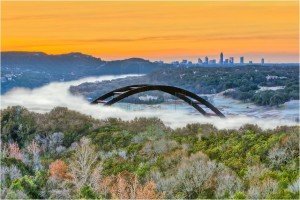 It is a large arched bridge on Congress Avenue, which is almost in the center of the city that connects the northern and southern parts of the metropolis. This place is considered one of the most picturesque in the city, and Pennybacker Bridge itself is the most unusual attraction of Austin.
It is a large arched bridge on Congress Avenue, which is almost in the center of the city that connects the northern and southern parts of the metropolis. This place is considered one of the most picturesque in the city, and Pennybacker Bridge itself is the most unusual attraction of Austin.
The bridge became the home for a whole horde of bats that chose its tall archways. It is said that there are more than 1.5 million of these nightly creatures in the vicinity of the bridge. In the dark, they leave their shelter and go to search for food in a huge pack. Local authorities do not even try to fight this invasion of night vampires. The fact is that bats render the city an invaluable service, saving it from the omnipresent harmful insects. Enjoy the spectacle of night flying winged animals is possible only from March to November, as in winter they fall into a hibernation.
As for the bridge itself, better known in Austin as “360 Bridge”, its construction began in 1979, and by July 1982 most of the metal structures had been built. This design was named after Percy Pennybucker, a structural engineer who developed bridges for the Texas Road Department and a pioneer in the field of welded technologies.
Interesting facts about the bridge:
- In general, the Pennybacker Bridge cost the budget of Texas $ 10 million.
- Thanks to the original engineering solution, the bridge is designed in such a way that not a single part of it touches the water.
- Its length is 351 meters, the length of the central arch span is 183 meters. At the time of construction, Pennybacker Bridge was the second bridge in the world of similar construction. It has four lanes for cars, as well as biking and walking paths.
Interesting: To fully enjoy the beautiful scenery, part of which is Pennybacker Bridge, it is worth climbing one of the nearby hills. An excellent view also opens from an outdoor café, which is located nearby.
Back
Place to visit number 5: The Museum of Mexican Art
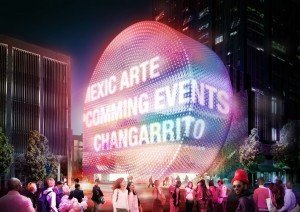 The museum was created to collect and store traditional and contemporary art objects of Mexico and other Latin American countries. It was founded in 1984 by artists:
The museum was created to collect and store traditional and contemporary art objects of Mexico and other Latin American countries. It was founded in 1984 by artists:
- Sylvia Orozco,
- Sam Coronado ,
- Pio Pulido.
The exposition of the museum has been opened on the Day of the Festival of the Dead – a traditional Mexican holiday. The Mexic-Arte Museum regularly hosts exhibitions of outstanding Latin American artists, it is one of the few institutions in the US devoted entirely to the presentation of Mexican and American-Mexican culture and art. There are exhibits presenting the most diverse regions of Mexico and all the epochs of the development of this country, from the time of the Aztecs and Mayas to our days.
Visitors can see the works of the best masters of the “Aztec Country”: here you can enjoy the canvases of Diego Rivera, Frida Kahlo, David Siqueiros, José Orozco, Julio Castejanos, Juan Soriano, Roberto Montenegro and many other outstanding Mexican artists. Drawings on the wall of the museum are often amusing, sometimes gloomy. Most interestingly, the Mexic-Arte Museum looks during the “festival of the dead”, when its wall is covered with images of numerous skulls and skeletons, carefully traced with indescribable Mexican color.
Interesting: Connoisseurs of beauty and lovers of Mexican culture are encouraged to look in the shop at the museum, where you can buy amazing souvenirs, reproductions of paintings and various handicrafts of folk artisans from Mexico.
Back
Place to visit number 6: Museum-Library of Lyndon Baines Johnson
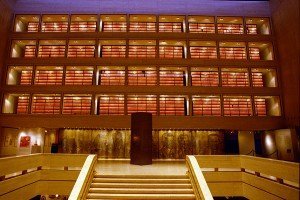 This is one of the 13 presidential libraries of the United States, which is subordinate to the National Office of Documentation and Archives. It is located on the territory of the University of Texas and has been operating since 1971. The funds of this library store approximately 45 million pages of various historical documents, including the work of Lyndon Baines Johnson himself.
This is one of the 13 presidential libraries of the United States, which is subordinate to the National Office of Documentation and Archives. It is located on the territory of the University of Texas and has been operating since 1971. The funds of this library store approximately 45 million pages of various historical documents, including the work of Lyndon Baines Johnson himself.
Thirty-sixth US President Democrat Lyndon Johnson is a native of Texas. The president died on his own ranch in Texas on January 22, 1973. The day before his death, he learned about the end of the war in Vietnam. Lyndon Johnson provided an invaluable service to the University of Texas, donating a significant part of its future foundation. Among the documents presented by the president there were:
- original texts of memorandums,
- about 600,000 historical photographs,
- valuable films with documentary chronicles,
- more than 5,000 video cassettes,
- about 4,000 audio cassettes.
All this became the basis of the library. Among other materials, the museum houses a unique collection of political caricatures that cover the main milestones of the activities of the United States government. They depict prominent politicians of the country, who have been in power since 1930. At present, the painstaking work of library-museum staff on the collection of materials continues. The main goal of the institution is to preserve the national heritage for future generations of Americans. Visitors can use the old telephone and listen to the historical conversations of the top officials of the state concerning the transfer of power to Johnson. There is also a separate exposition dedicated to the events in Vietnam. In one of the rooms of the museum, the Oval Office in the White House is fully reproduced, and some pieces of furniture are genuine. Among the exhibits there are Johnson’s personal belongings, as well as numerous gifts from other heads of state.
Interesting: Among the exhibits of the museum there is a special exposition devoted to the murder of Kennedy, who was succeeded by Lyndon Johnson.
Back
Place to visit number 7: Zilker Park
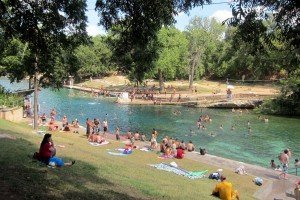 Perhaps the most favorite vacation spot for Austin residents is the picturesque city garden or Zilker Park, which is located on the south bank of the Colorado River, almost in the center of the city. This park was founded in 1955 and named after its patron – Andrew Jackson Zilker, a famous politician and philanthropist. This man, who came to Austin at the age of 18 with only a few cents in his pocket and got rich thanks to hard work gave the city in 1917 a large piece of land where later a beautiful garden was broken. In the 30 years, during the Great Depression, the planning and development of the future Zilker Park began. Currently, this park is included in the National Register of Historic Places of the United States.
Perhaps the most favorite vacation spot for Austin residents is the picturesque city garden or Zilker Park, which is located on the south bank of the Colorado River, almost in the center of the city. This park was founded in 1955 and named after its patron – Andrew Jackson Zilker, a famous politician and philanthropist. This man, who came to Austin at the age of 18 with only a few cents in his pocket and got rich thanks to hard work gave the city in 1917 a large piece of land where later a beautiful garden was broken. In the 30 years, during the Great Depression, the planning and development of the future Zilker Park began. Currently, this park is included in the National Register of Historic Places of the United States.
This picturesque garden attracts not only the townspeople, but also the numerous guests of Austin. The solid size of its territory allows for holding various large-scale events here, for example, a music festival attended by performers from many countries of the world, in order to present music in various styles:
- rock,
- pop,
- indie,
- folk ,
- electronic music,
- hip-hop.
There is also a festival of kites, which enjoys special love among the children. To the services of the visitors of Zilkert Park there are kilometers of magnificent cycle paths, volleyball and football fields, a polo site, picnic places. The smallest visitors have the opportunity to ride in trains of a miniature railway, and on hot summer days you can swim in a beautiful man-made reservoir filled with the waters of the Barton Creek canal.
On the territory of the park there is a small open theater, on the stage of which performances of local theatrical companies periodically take place, musical groups and beginning singers also perform here. But still the most wonderful thing that is in the Zilker Park is its magnificent nature. Above the wide alleys, their green branches stretch their trees, the green grass under their feet softly resembles a fluffy carpet. Here everything is arranged for maximum convenience of visitors – shady alleys, cozy gazebos, murmuring streams with clear water and comfortable benches, located literally at every step. A special delight and admiration are the flowers that grow in the park everywhere. They resemble a bright blanket flowing over picturesque hills, and the air in the garden is imbued with their magical scent.
Interesting: In 2006, the legendary Rolling Stones performed in this park, the concert of which was attended by about 42 thousand spectators.
Back